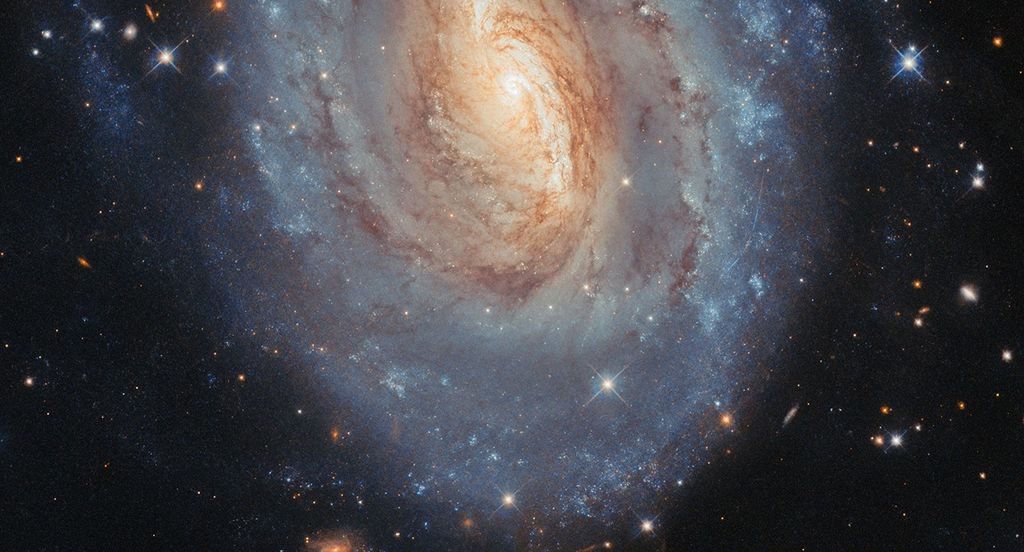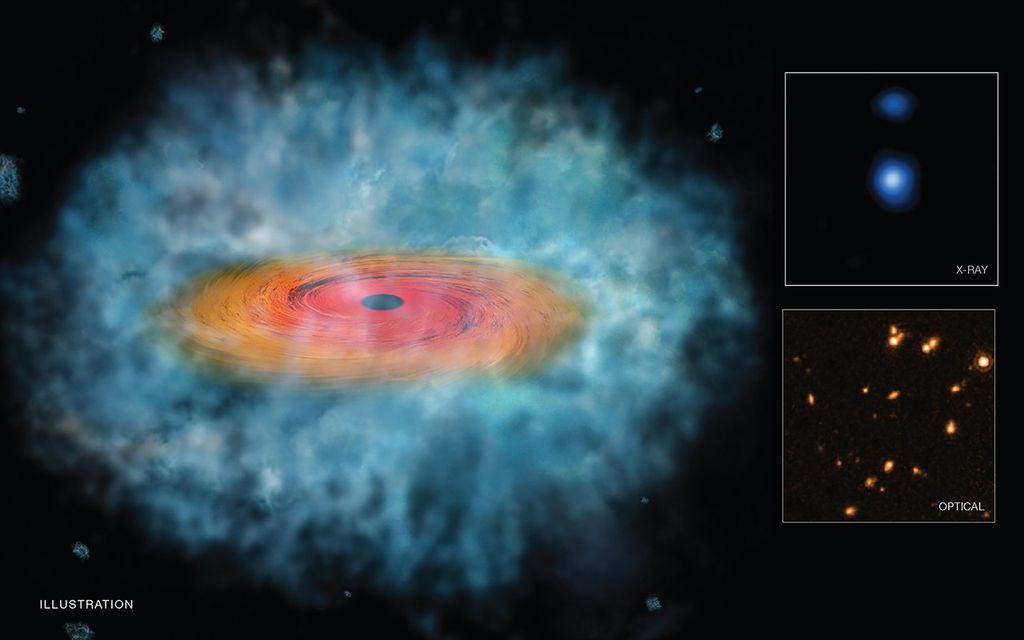1 min read
Comparison of TOI-421 b and GJ 1214 b to Earth and Neptune
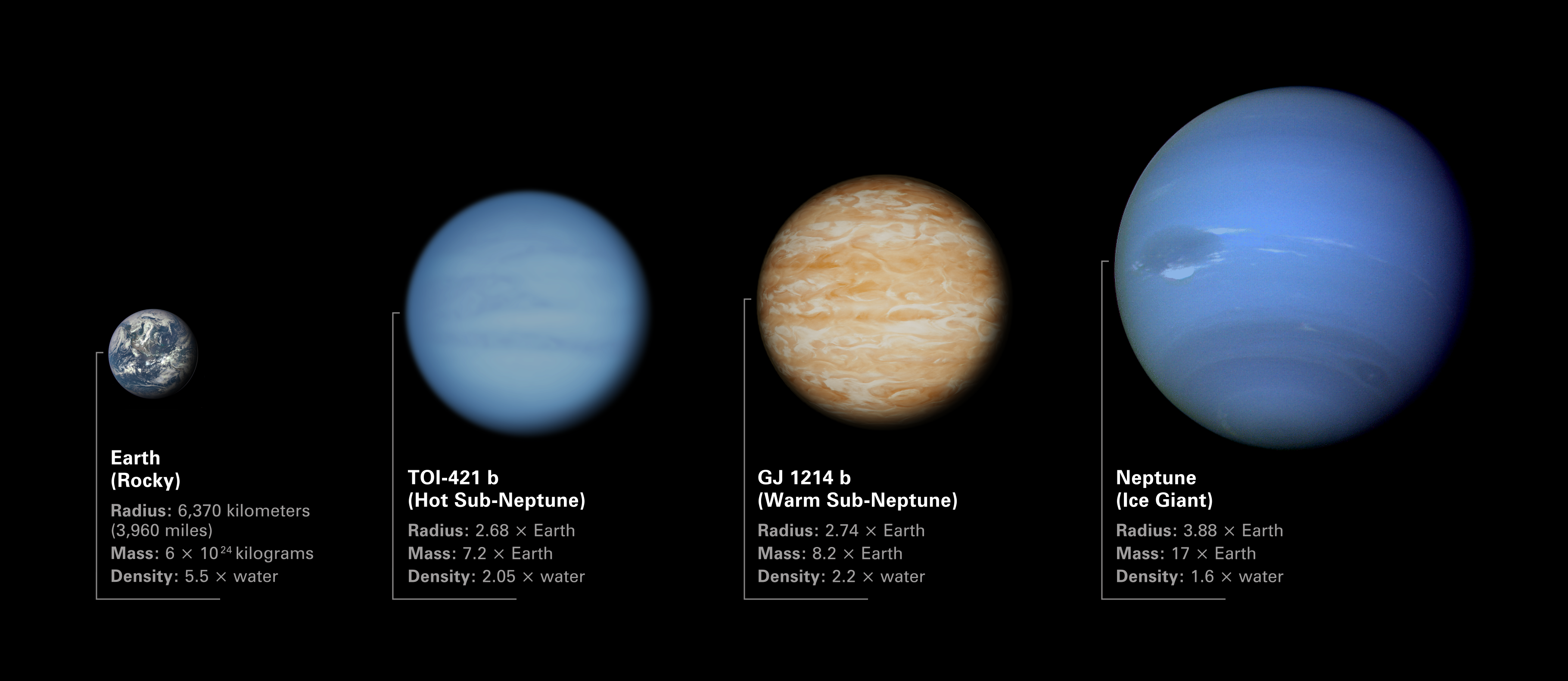
Illustration comparing the sizes of sub-Neptune exoplanets TOI-421 b and GJ 1214 b to Earth and Neptune. Both TOI-421 b and GJ 1214 b are in between Earth and Neptune in terms of radius, mass, and density. The low densities of the two exoplanets indicates that they must have thick atmospheres.
The planets are arranged from left to right in order of increasing radius and mass:
- Image of Earth from the Deep Space Climate Observatory: Earth is a rocky planet with an average radius of roughly 6,370 kilometers (3,960 miles), a mass of about 6 billion trillion metric tons, and a density 5.5 times that of water.
- Illustration of TOI-421 b: TOI-421 b is a hot sub-Neptune exoplanet with a radius 2.68 times Earth, a mass 7.2 times Earth, and a density 2.05 times water.
- Illustration of GJ 1214 b: GJ 1214 b is a warm sub-Neptune exoplanet with a radius 2.74 times Earth, a mass 8.2 times Earth, and a density 2.2 times water.
- Image of Neptune from Voyager 2: Neptune is an ice giant with a radius 3.88 times that of Earth (giving it a volume nearly 58 times Earth), a mass 17 times Earth, and a density of only 1.6 times water.
The illustration shows the planets to scale in terms of radius, but not location in space or distance from their stars. While Earth and Neptune orbit the Sun, TOI-421 b orbits a sun-like star roughly 244 light-years away, and GJ 1214 b orbits a small red dwarf star about 48 light-years away.
- Release DateNovember 17, 2021
- Science ReleaseNASA’s James Webb Space Telescope Primed to Lift the Haze Surrounding Sub-Neptunes
- CreditIllustration: NASA, ESA, CSA, Dani Player (STScI)
Related Images & Videos

Exoplanet TOI-421 b and Its Star (Illustration)
Illustration of what exoplanet TOI-421 b might look like. TOI-421 b is a hot sub-Neptune-sized exoplanet orbiting a Sun-like star roughly 244 light-years from Earth. TOI-421 b is thought to have a clear atmosphere free of haze and clouds. This illustration is based on our...

Exoplanet GJ 1214 b and Its Star (Illustration)
Illustration showing what exoplanet GJ 1214 b could look like based on current information. GJ 1214 b, a warm sub-Neptune-sized exoplanet roughly 48 light-years from Earth, is one of the most studied exoplanets in the galaxy. Previous spectroscopic observations indicate that the...
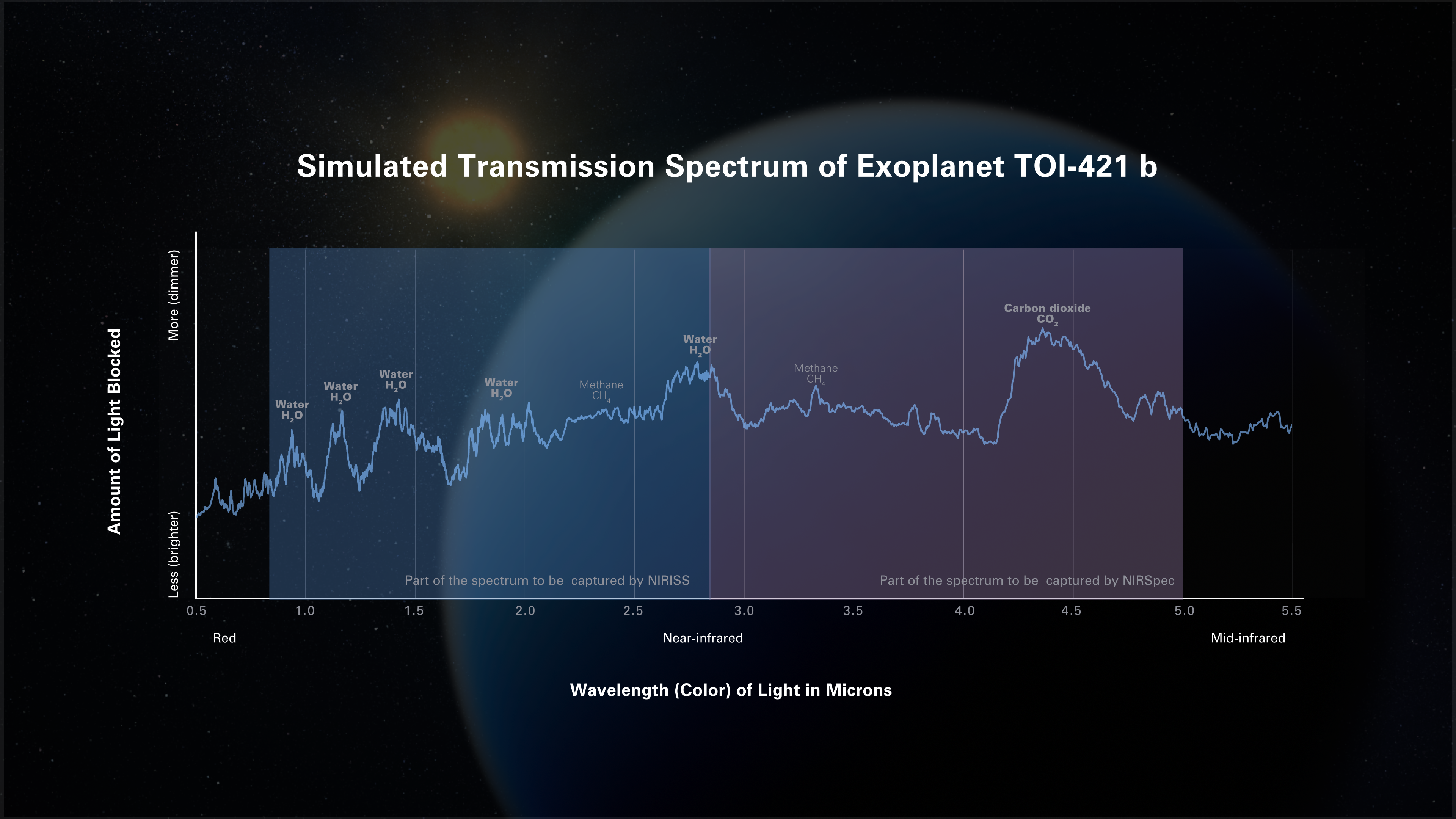
Simulated Transmission Spectrum of Exoplanet TOI-421 b
Possible transmission spectrum of the hot sub-Neptune exoplanet TOI-421 b. A transmission spectrum shows the amount of starlight of different wavelengths (colors) that is blocked by the planet’s atmosphere. Researchers use computer models to predict what spectra will look like...
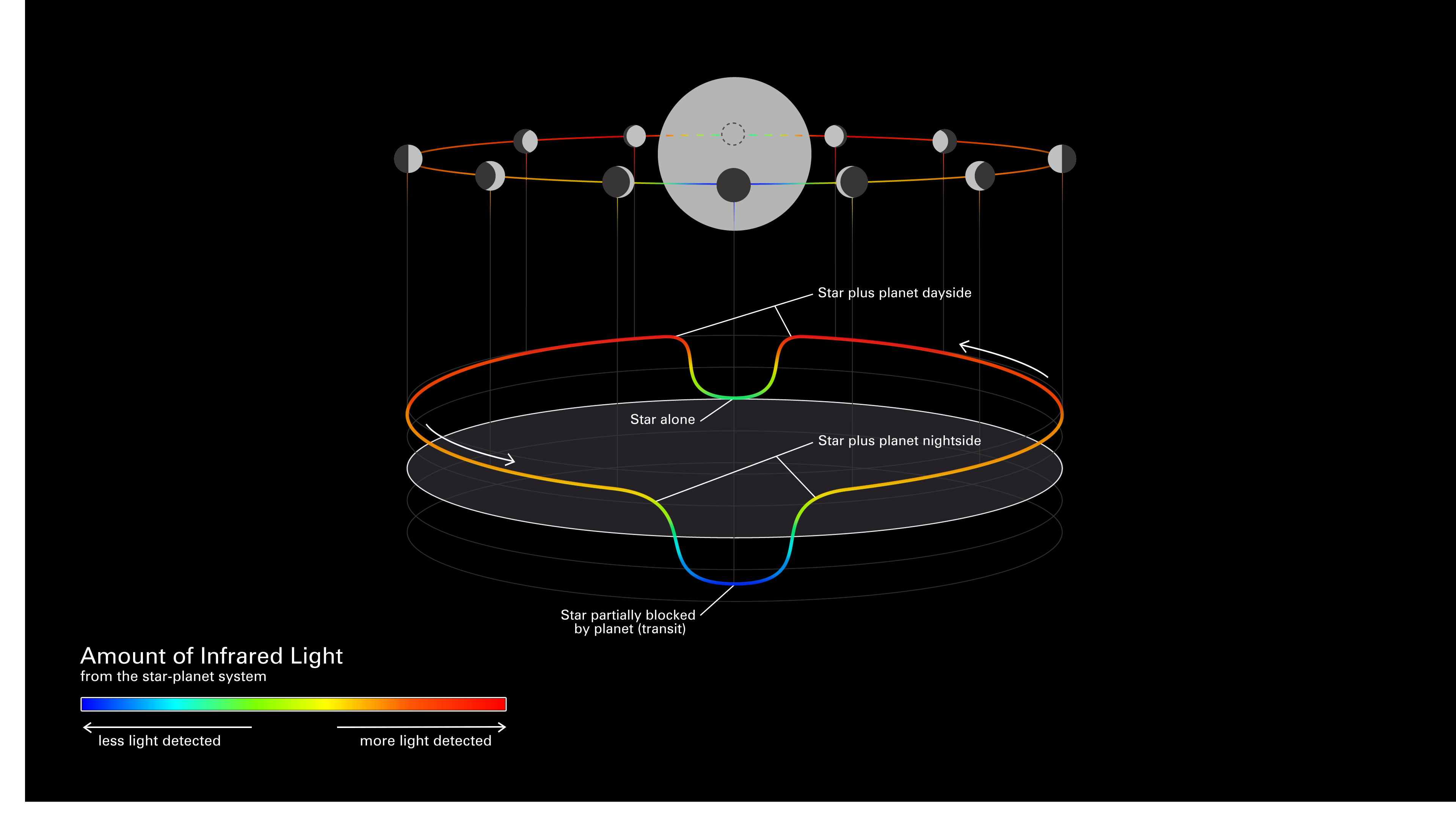
Diagram of an Exoplanet Phase Curve
This simplified diagram of an exoplanet phase curve shows the change in total brightness of a star–planet system as the planet orbits the star. The system looks brighter when more of the lit side of the planet is facing the telescope (full phase), and dimmer when more of the...
Share
Details
Laura Betz
NASA’s Goddard Space Flight Center
Greenbelt, Maryland
laura.e.betz@nasa.gov
NASA, ESA, CSA, Dani Player (STScI)














